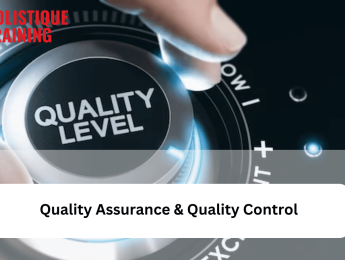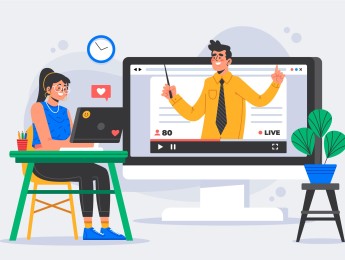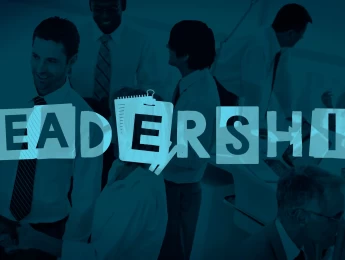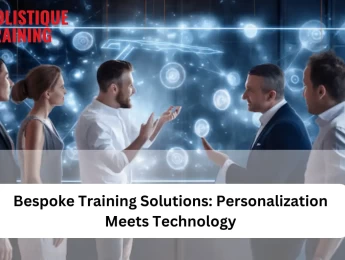- Table of Contents
- Quality Assurance & Quality Control: A Brief Breakdown
- Similarities Between QA and QC
- Customer Satisfaction:
- Process Improvement:
- Data Utilisation:
- Collaboration:
- Differences Between QA and QC
- 1- Focus and Timing
- 2- Nature of Activities
- 3- Goal
- 4- Responsibility
- How to Always Maintain Quality
- 1- Establish Clear Standards
- 2- Implement Robust Processes
- 3- Training and Skill Development
- 4- Regular Monitoring and Evaluation
- 5- Thorough Testing and Inspection
- 6- Feedback Integration
- 7- Continuous Improvement
- 8- Collaboration and Communication
- 9- Customer-Centric Approach
- Navigating Challenges: Ensuring Constant Quality in the Face of Adversity
- 1. Changing Requirements
- 2. Resource Constraints
- 3. Technological Advancements
- 4. Globalisation and Supply Chain Complexity
- 5. Rapid Development Cycles
- 6. Resistance to Change
- 7. External Factors
- 8. Balancing QA and QC Efforts
- In Conclusion
The pursuit of excellence is an inherent characteristic of human nature. In every endeavour, from crafting the finest piece of art to engineering complex software systems, the aspiration to achieve and maintain high standards of quality is unceasing. In the realms of manufacturing, services, and software development, two fundamental concepts play a pivotal role in upholding these standards: Quality Assurance (QA) and Quality Control (QC). Though often used interchangeably, QA and QC are distinct approaches with specific purposes. In this comprehensive exploration, we delve into the definitions, similarities, differences, and strategies for maintaining unwavering quality.
Quality Assurance & Quality Control: A Brief Breakdown
Quality Assurance and Quality Control are the cornerstones of maintaining product or service quality. While both are essential components of a comprehensive quality management system, they tackle different aspects of the quality spectrum.
Quality Assurance (QA) encompasses a holistic approach that is process-oriented. It involves a series of systematic activities designed to ensure that the processes used to develop or deliver a product or service are consistent and effective. QA aims to prevent defects or issues from occurring in the first place by setting up robust processes, standards, and methodologies. It involves continuous monitoring, evaluation, and improvement of processes to enhance efficiency and minimise deviations from established norms.
On the other hand, Quality Control (QC) is a product-oriented approach that focuses on identifying defects or discrepancies in the final product or service. It involves rigorous inspections, testing, and measurements to assess whether the product or service meets the predetermined quality standards. QC primarily deals with identifying and rectifying issues after they have occurred, ensuring that only products meeting the desired quality levels are delivered to customers.
Similarities Between QA and QC
Though Quality Assurance (QA) and Quality Control (QC) adopt distinct approaches, they share common goals and attributes that form the bedrock of any robust quality management system.
Customer Satisfaction:
Customer satisfaction is the ultimate litmus test for the success of any product or service. Both QA and QC are inherently driven by the shared objective of meeting and exceeding customer needs and expectations. A product or service that adheres to stringent quality standards is more likely to result in customer delight and foster long-term loyalty. The intersection of QA and QC at the point of customer satisfaction is where the success of both methodologies converges.
Process Improvement:
Continuous improvement is a mantra woven into the fabric of both QA and QC. While QA focuses on refining processes to prevent defects from occurring in the first place, QC identifies areas where processes may be falling short and prompts adjustments for future enhancements. This dynamic interplay ensures that not only are current issues addressed, but lessons learned are applied to foster an environment of perpetual improvement. The amalgamation of proactive and reactive measures facilitates a comprehensive approach to refining and optimising organisational processes.
Data Utilisation:
In the age of data-driven decision-making, both QA and QC rely on data and metrics to make informed decisions. QA utilises data to analyse trends and identify potential process improvements. By contrast, QC leverages data to detect deviations from standards and pinpoint areas for correction. The common thread lies in the strategic use of data as a compass guiding organisations toward higher levels of efficiency and quality. The synergy between QA and QC ensures that data becomes a powerful tool for achieving quality objectives.
Collaboration:
Effective implementation of both QA and QC necessitates collaboration among different teams and stakeholders within an organisation. QA ensures that everyone involved understands and adheres to standardised processes. Simultaneously, QC involves cross-functional teams in identifying and addressing defects. The collaborative spirit that permeates both methodologies fosters a shared commitment to quality. The result is an organisation where individuals from various departments collaborate seamlessly, each contributing to the larger goal of delivering high-quality products or services.
These similarities underscore the idea that, despite their different foci and methods, QA and QC are complementary forces working in tandem to ensure the overall success of an organisation in meeting quality standards and customer expectations. The intersection of these two approaches creates a holistic quality management ecosystem that not only identifies and rectifies defects but also prevents their occurrence through systematic processes and continuous improvement initiatives.
Differences Between QA and QC
In the intricate landscape of quality management, understanding the nuanced differences between Quality Assurance (QA) and Quality Control (QC) is essential. While both share the overarching goal of delivering high-quality products or services, their methodologies, focus, and timelines diverge significantly.
1- Focus and Timing
QA:Embarking on a proactive journey, QA focuses on preventing defects by establishing and maintaining robust processes. Its activities span the entire development lifecycle, from inception to delivery. QA strives to lay the groundwork for quality from the very beginning, ensuring that every step adheres to predefined standards and methodologies.
QC:Taking a reactive stance, QC is primarily concerned with identifying defects after they have occurred. QC activities unfold towards the end of the development lifecycle during product testing and inspection. Its emphasis lies on scrutinising the final product or service to ensure it aligns with predetermined quality standards before reaching the customer.
2- Nature of Activities
QA:Engages in a spectrum of proactive activities such as process definition, process monitoring, process improvement, and training. The essence of QA lies in establishing a culture of quality by emphasising preemptive measures to ensure consistency and effectiveness throughout the development or delivery process.
QC:Encompasses a set of reactive activities, including inspections, testing, and measurements. The primary goal of QC is to identify and rectify defects that have occurred during the development process. It emphasises post-production measures to ensure that the final product or service meets the desired quality standards.
3- Goal
QA:Aims to build a robust process that prevents defects from occurring in the first place. By instituting stringent standards, methodologies, and continuous improvement initiatives, QA seeks to minimise the need for corrective actions downstream.
QC:Aims to identify defects in the final product or service and take corrective actions to ensure that only products meeting quality standards are released to customers. QC acts as a gatekeeper, ensuring that any defects are rectified before they reach the hands of the end-user.
4- Responsibility
QA:The responsibility for QA is distributed across the entire team involved in the development or delivery process. It is a collective effort where everyone, from project managers to developers, contributes to adhering to standardised processes and maintaining high-quality standards.
QC:In contrast, QC is often carried out by dedicated quality control teams. These teams are specifically responsible for inspecting and testing products for defects. The focus of QC lies in thorough scrutiny and validation, ensuring that the final output meets the defined quality criteria.
Understanding these differences is crucial for organisations aiming to implement a comprehensive quality management strategy. By acknowledging the unique roles and responsibilities of QA and QC, organisations can create a harmonious synergy that addresses both preventive and corrective aspects of quality assurance. It's not a matter of choosing between QA or QC; rather, it's about recognising their distinctive contributions and integrating them seamlessly to ensure a holistic approach to quality management.
How to Always Maintain Quality
Maintaining unwavering quality demands a strategic combination of QA and QC approaches, along with a commitment to continuous improvement. Here's a roadmap to ensure excellence in your endeavours:
1- Establish Clear Standards
The foundation of maintaining quality begins with the establishment of clear and precise quality standards. These standards serve as a guiding compass for both QA and QC efforts, providing a benchmark against which the development and inspection processes can be measured. Clearly defined standards facilitate uniformity and consistency throughout the organisation.
2- Implement Robust Processes
QA places a strong emphasis on processes. Implementing robust processes is the cornerstone of QA, ensuring that they are well-documented, standardised, and consistently followed across the organisation. Well-defined processes form the backbone of preventing defects and deviations, fostering a culture of quality from the ground up.
3- Training and Skill Development
Investing intraining programs is essential to equip your team with the necessary skills to execute processes effectively. A knowledgeable and skilled team is better positioned to identify potential issues, adhere to standardised processes, and actively contribute to the overall quality objectives of the organisation. Training ensures that the workforce is well-prepared to navigate the complexities of the quality landscape.
4- Regular Monitoring and Evaluation
Continuous improvement begins with regular monitoring and evaluation of processes. QA practices involve data analysis, trend identification, and process optimisation. By continuously assessing the effectiveness of processes, organisations can proactively identify areas for improvement, preventing potential defects and deviations before they become significant issues.
5- Thorough Testing and Inspection
Complementing QA, QC practices involve thorough testing and inspections of the final products or services. This ensures that defects are identified and rectified before reaching the customer. Rigorous testing is a key aspect of QC, acting as a safety net to catch any deviations from quality standards and preventing them from impacting the end-user experience.
6- Feedback Integration
Feedback loops from QC activities should be integrated into the broader quality management system. Leverage insights gained from QC to drive improvements in processes. Addressing the root causes of defects identified during QC activities ensures that corrective actions are taken, preventing the recurrence of similar issues in the future. Feedback integration is a crucial step in the continuous improvement cycle.
7- Continuous Improvement
Embrace a culture of continuous improvement that extends across both QA and QC processes. Regularly review and refine these processes to adapt to changing requirements, emerging technologies, and industry best practices. Continuous improvement ensures that the organisation remains agile and responsive to the evolving landscape, positioning itself as a leader in delivering exceptional quality.
8- Collaboration and Communication
Foster a culture of collaboration and open communication between teams involved in QA and QC. Transparent communication ensures that issues are addressed promptly and effectively. Cross-functional collaboration between QA and QC teams facilitates a holistic approach to quality management, where insights from both proactive and reactive measures are leveraged for optimal results.
9- Customer-Centric Approach
Keep the customer at the centre of your quality efforts. Understand their needs, preferences, and feedback to tailor your quality management strategies. A customer-centric approach ensures that your products or services align with customer expectations, leading to higher satisfaction and loyalty. Regular customer feedback serves as a valuable input for refining both QA and QC processes.
In essence, the roadmap to always maintain quality involves a synergistic integration of QA and QC approaches, guided by clear standards, robust processes, continuous improvement, and a customer-centric mindset. This strategic combination not only prevents defects but also ensures that the final products or services consistently meet or exceed customer expectations. The journey towards unwavering quality is not a destination but an ongoing commitment to excellence.
Table 1: Metrics to measure the effectiveness of Quality Control (QC)
QC Metrics | Description |
Defect Density | Number of defects identified per unit. |
Inspection Effectiveness | How well inspections uncover quality issues. |
Test Coverage | Percentage of code exercised by testing. |
Escaped Defects | Defects found by customers after product release. |
Resolution Time | Time taken to resolve identified defects. |
Navigating Challenges: Ensuring Constant Quality in the Face of Adversity
While the pursuit of constant quality is a noble endeavour, organisations often encounter a myriad of challenges along the way. Understanding and addressing these challenges is essential to maintaining unwavering quality. Let's delve into some of the common hurdles and strategies to overcome them:
1. Changing Requirements
One of the primary challenges is the ever-evolving landscape of requirements. Customer expectations shift, industry standards change, and technological advancements introduce new complexities. Adapting to these changes requires a dynamic approach to quality management. Regularly reassessing and updating standards, processes, and training programs ensures that the organisation remains agile in the face of changing requirements.
2. Resource Constraints
Limited resources, whether in terms of budget, time, or manpower, can pose a significant challenge. Balancing the need for comprehensive QA and QC activities with resource constraints requires strategic prioritisation. Organisations must identify critical processes and stages where QA and QC efforts can have the most significant impact, optimising resource allocation for maximum effectiveness.
3. Technological Advancements
While technological advancements offer opportunities for improvement, they also present challenges in terms of integration and compatibility. New technologies may disrupt existing processes, requiring organisations to invest in training and updates. QA practices need to be flexible enough to incorporate emerging technologies seamlessly, ensuring that advancements enhance, rather than hinder, overall quality.
4. Globalisation and Supply Chain Complexity
In an era of globalisation, supply chains are often complex and interconnected. Ensuring quality across diverse locations and suppliers introduces challenges related to standardisation and consistency. Implementing standardised QA and QC practices, along with clear communication channels, helps maintain quality standards throughout a global supply chain.
5. Rapid Development Cycles
Agile development methodologies and rapid release cycles are prevalent in many industries. While these practices enhance responsiveness, they also pose challenges for traditional QA and QC processes. Implementing automated testing, continuous integration, and parallel testing streams can help organisations keep pace with rapid development cycles without compromising on quality.
6. Resistance to Change
Introducing new QA and QC processes often faces resistance from within the organisation. Employees may be accustomed to existing workflows, and change can be met with scepticism. Overcoming this challenge requires effective change management strategies, clear communication of benefits, and providing the necessary training and support to ease the transition.
7. External Factors
External factors such as economic fluctuations, geopolitical events, or public health crises can have an unforeseen impact on the ability to maintain constant quality. Establishingcontingency plans and building resilience into the quality management system helps organisations navigate external uncertainties without compromising on their commitment to quality.
8. Balancing QA and QC Efforts
Striking the right balance between preventive QA measures and corrective QC actions can be challenging. Overemphasis on either approach may lead to inefficiencies or overlooking potential issues. A holistic approach that integrates both QA and QC seamlessly, with feedback loops for continuous improvement, is crucial for maintaining a well-roundedquality management system.
Addressing these challenges requires a proactive and adaptive mindset. Organisations that anticipate and respond to these hurdles with strategic solutions are better positioned to ensure constant quality. Continuous monitoring, flexibility in processes, and a commitment to learning from challenges contribute to the resilience needed for navigating the complexities of quality management. The journey to constant quality is not without obstacles, but it is through overcoming these challenges that organisations strengthen their commitment to excellence.
In Conclusion
In the realm of quality management, both Quality Assurance and Quality Control play indispensable roles. While QA focuses on preventing defects through robust processes, QC targets defect identification and correction. The synergy between these two approaches is crucial for achieving and maintaining high standards of quality. By combining the strengths of QA and QC, organisations can consistently deliver products and services that meet or exceed customer expectations. The journey towards excellence is perpetual, requiring a commitment to continuous improvement and a dedication to unwavering quality standards.
If you’re yearning to master the art of precision and unfailing quality, our ‘Comprehensive Quality Control and Assurance’ course stands as the beacon guiding your path. Delve deeper into the intricacies, strategies, and techniques of QA and QC. Equip yourself with the wisdom and prowess to steer organisations toward a realm of unwavering excellence. Your journey doesn't end here; it flourishes with the knowledge imparted by our comprehensive course.
























